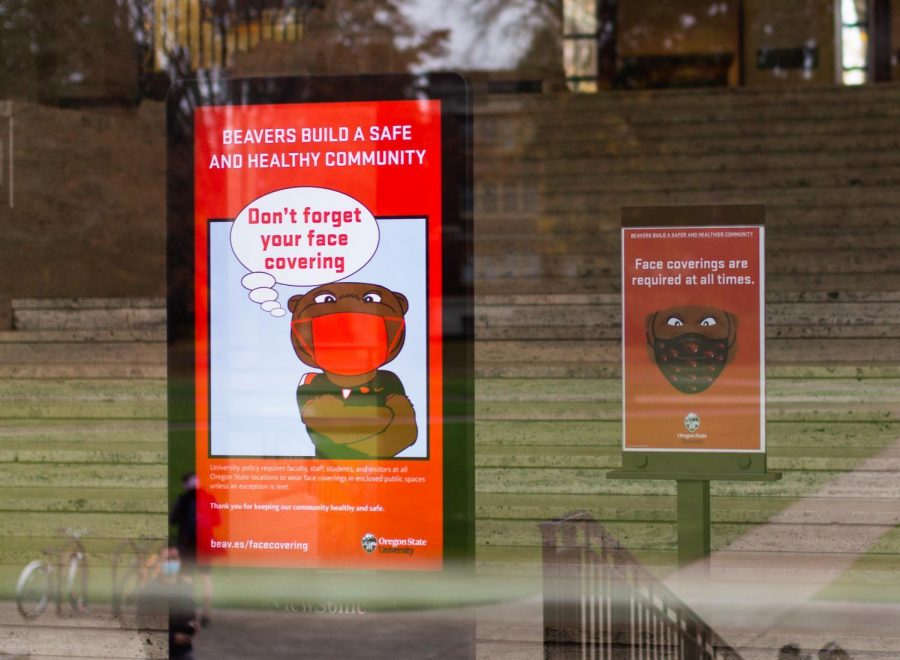OSU updates face covering policy; masks are the ‘most important’ public health measure
November 23, 2020
To comply with federal, state, and local guidance regarding COVID-19, Oregon State University’s Provost office updated the face covering policies for both public and common settings.
This update to the policy occurred Oct. 22. The newest development in the policy is the removal of face shields being on the list of acceptable face coverings. Both the Centers for Disease Control and Oregon Health Authority advise against using face shields as they “are not as effective at limiting the release of aerosols that can go around the shield.”
Masks with vents are also no longer acceptable forms of face coverings on campus for the same reason. Students should wear masks that fit well and have two layers of washable fabric. Gaiters and bandanas are also acceptable face coverings as long as they cover the mouth and nose and fit to the side of your face.
Changes to the face covering policy will be made as more information from the CDC and OHA is released.
According to executive director of Student Health Services, Jenny Haubenreiser, “public health experts are very clear that masks and face coverings are one of the most important public health measures we can utilize in preventing the spread of COVID-19. Evidence continues to grow that mask-wearing greatly reduces the spread of respiratory droplets and aerosols emitted when people talk, laugh and cough.”
Following the social distancing and face covering policies are “how we work together to help protect our friends, families, communities and ourselves,” Haubenreiser said via email.
Despite having explicit rules about face coverings on campus, there are still violations. Dan Larson, vice provost for student affairs said via email OSU has had 76 violations of individuals not observing the face covering policy as of Nov. 4. Students that do not follow face covering guidelines may not be allowed back on campus. Students should encourage others to wear a mask. If someone is being disruptive, the OSU Department of Public Safety can be called at 541-737-3010.
It is important to remember that “as many as 50% of individuals infected with COVID-19 do not have symptoms, which is why face coverings need to be worn any time we are in public areas or around others outside of our immediate family group,” Haubenreiser said. Following the policy keeps those that are more vulnerable safe, since people could be asymptomatic without knowing.
Since late April, OSU has provided weekly prevalence testing for 1,000 students, faculty and staff. 2,000 students living in the residence halls and 500 fraternity and sorority members were tested before moving in this term.
Steve Clark, vice president of university relations and marketing said via email, “In September, OSU, Benton County Health Department and the city of Corvallis launched an extensive public health communications campaign that stresses that everyone wears face coverings, engages in social distancing, washes their hands frequently, observes your own health conditions and stay home if not feeling well, and participate in TRACE OSU prevalence testing, if enrolled or employed at OSU.”
As students return home for winter break, these public health policies surrounding face masks are equally important. Students can check the OSU COVID-19 website for updates, and can expect updates via email regarding new policies, plans for returning to campus and information about TRACE-COVID-19.











































































































